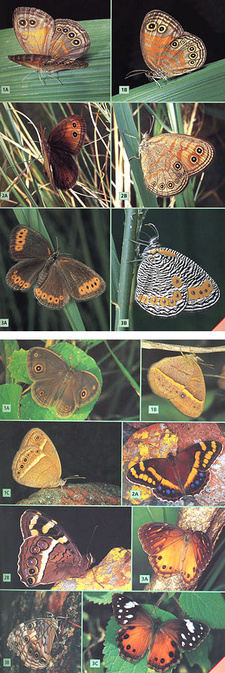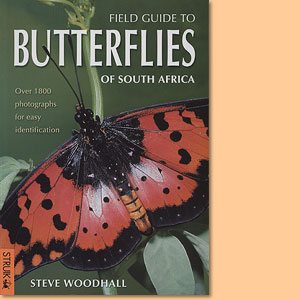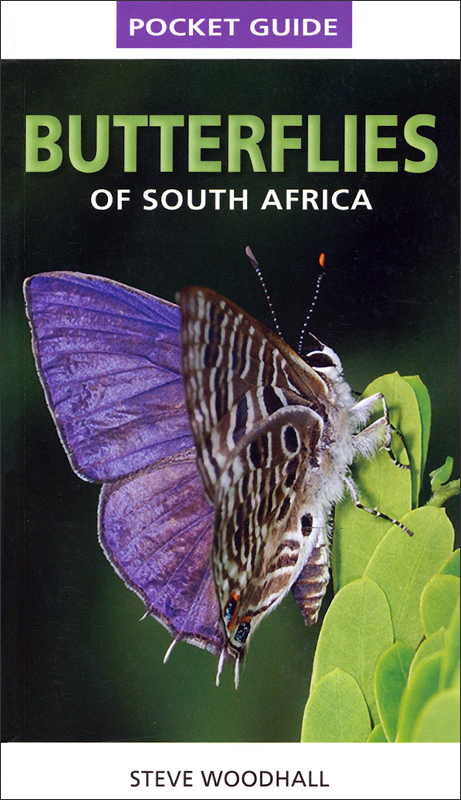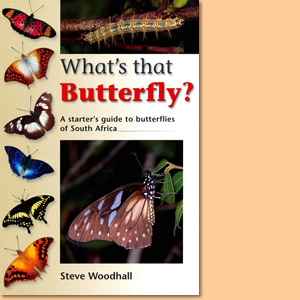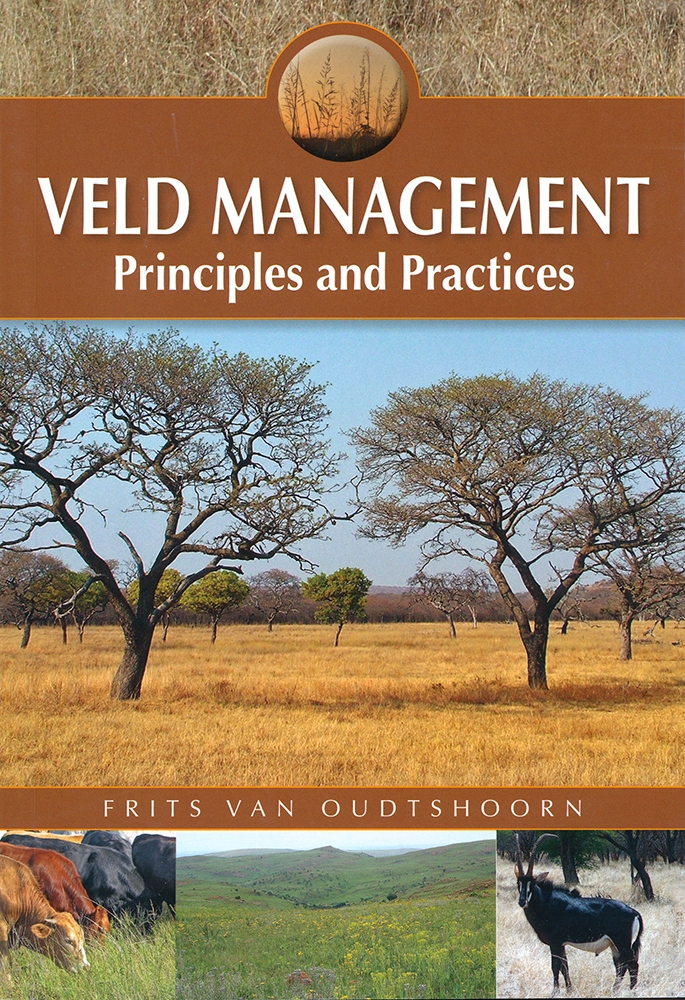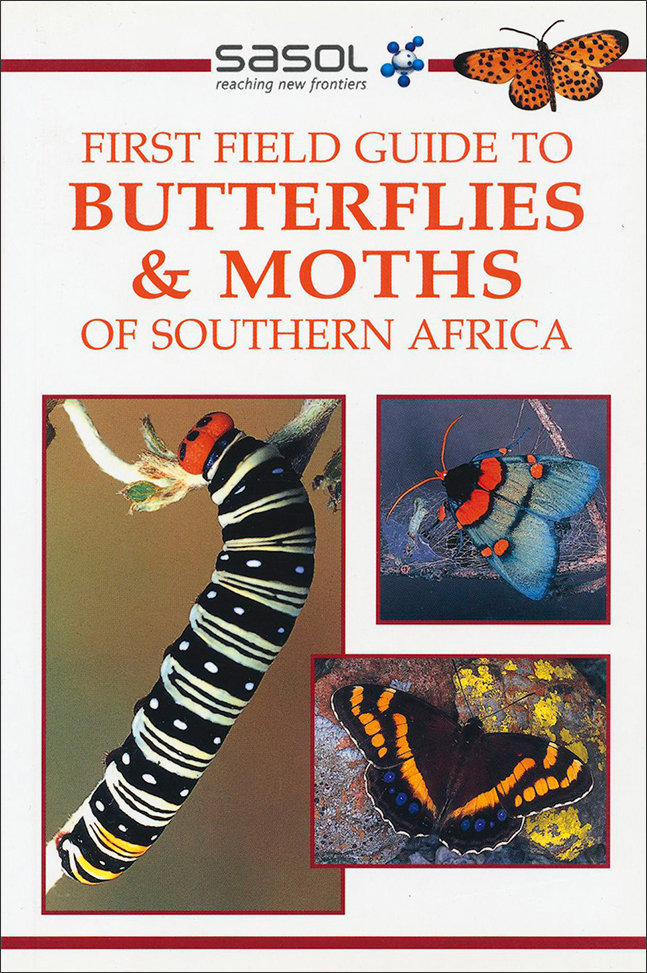Field Guide to Butterflies of South Africa, by Steve Woodhall
Field Guide to Butterflies of South Africa is the only comprehensive and up-to-date field guide to South African butterflies available. With more than 1800 full-colour photographs of mostly live specimens in the field and distribution maps, it ensures clarity and ease of use.
Introduction:
South Africa is often described as 'a world in one country' because of its spectacularly diverse scenery and vegetation. This diversity extends to the country's wildlife, including its butterflies. There are about 20 000 species of butterfly worldwide, and South Africa is home to more than 660 of these (666 to be exact) - a vast number tor country that lies mostly outside the Tropics. Generally, the further an area lies from the Equator, the poorer its butterfly fauna. Tropical butterflies are evolutionarily advantaged in that the lush, varied vegetation and warm climatic conditions encourage continuous generations that rapidly fill the region's many environmental niches. South Africa's butterfly richness stems in large part from the many specialist species that have adapted to niches created by our arid and temperate climate and our diverse vegetation types. Many of the butterflies are endemic, being found nowhere else in the world. Butterflies, like most invertebrates are sensitive to environmental change my and have been recognised as important indicators of terrestrial environmental health. Invertebrates do not disperse as widely as vertebrates, making them more vulnerable to the presence of toxins in the immediate environment; therefore, if there are no butterflies (probably the most visible of the invertebrate species) the environment is unhealthy.
How to use this book:
Photographs/Plates Butterflies are presented in the form of full-colour photographs and show male and female forms (where these differ) and, where possible, both under- and upper sides. Photographs are linked with individual species descriptions (on facing page) by a simple numbering system.
Layout of species accounts:
The species accounts are arranged according to family, subfamily, and genus groups. Each genus is described in some detail and covers life history (ova-larvae-pupae) and habits, as these are usually constant within a genus. Each species account is given in a standard format, as shown below, and is accompanied by photographs of the species on the facing page to allow for easy identification and quick reference in the field.
Map: A quick-and-easy guide to the distribution of the species.
Name: Species' common name, alternative name (where applicable) and scientific name.
Wingspan: A typical range of sizes, from wing tip to wing tip
Identification: Identifies corresponding photographs on the facing page; points out important diagnostic features, and describes behavioural traits particular to the species.
Mimic/Model: Indicates whether the butterfly is a mimic of another species, or a model for a mimic
Distribution: A detailed description of the species' geographical distribution, including the biomes in which it is found; to be used in conjunction with the map.
Habitat: Indicates the terrain in which the butterfly is most likely to be found.
Flight period: Gives typical and peak flight periods, i.e. when the butterfly is most likely to be seen.
Larval food: Refers to major larval food sources, usually plants but often (in lycaenids) other insects or insect secretions. A table of butterfly foods is provided on page 415.
This is an excerpt from the book: Field Guide to Butterflies of South Africa, by Steve Woodhall.
Title: Field Guide to Butterflies of South Africa
Author: Steve Woodhall
Struik Publishers
Cape Town, South Africa 2005
ISBN 9781868727247 / ISBN 978-1-86872-724-7
Softcover, 15x21 cm, 440 pages, throughout colour photos
Woodhall, Steve im Namibiana-Buchangebot
Field Guide to Butterflies of South Africa
For easy identification in the field this comprehencive field guide features all of South Africa’s more than 660 butterfly species.
Pocket Guide: Butterflies of South Africa
This pocket guide offers concise text describing the habits, favoured habitat and early life stages of butterflies of South Africa.
What's that Butterfly?
What's that Butterfly? introduces the novice to a selection of the more than 660 species of butterfly in South Africa.
Weitere Buchempfehlungen
Veld Management: Principles and Practices
Veld Management, Principles and Practices supports land users professionaly managing the veld under their care.
First Field Guide to Butterflies and Moths of Southern Africa
First Field Guide to Butterflies and Moths of Southern Africa introduces to the more common moth and butterfly groups that occur in the southern African region.
The Fires Beneath: The Life of Monica Wilson, South African Anthropologist
The Fires Beneath: The life of anthropologist Monica Wilson is a South African story of groundbreaking scholarship, passionate creativity and personal tragedy.

